For Iran, 2020 was a particularly tumultuous year. It faced unprecedented economic challenges from tightening U.S. sanctions, a major political transition after a parliamentary election, and a health crisis that killed tens of thousands. It also marked the last full year of President Hassan Rouhani’s presidency, with hardliners jockeying to succeed him by exploiting the failure in his diplomacy with the United States. The headlines of 2020 included:
- In politics, conservative and hardline factions, including candidates closely aligned with the Revolutionary Guards, won a sweeping victory in parliamentary elections held on February 21 (a second round was held on September 11 to decide 10 seats). The conservatives and hardliners won 225 out of the 290 seats, more than doubling their presence in parliament; they had won 83 in the 2016 poll. In a major setback for President Rouhani, only 13 reformists won seats, down from 121 in 2016. The new parliament clashed with Rouhani, a political centrist, on cash subsidies and the nuclear program.
- On the economy, Iran was increasingly cut off from the international financial system as the Trump administration tightened sanctions. It faced significant obstacles to international trade and had few buyers for its oil; sales plummeted as low as 70,000 barrels a day in April, down from more than 2 million in 2016. Tehran had to divert scarce resources to procure medical supplies and aid citizens impacted by the economic fallout from COVID-19.
- On health, Iran was an early epicenter of the COVID-19 pandemic; it faced the worst outbreak in the Middle East. By the end of December, the coronavirus had killed more than 52,000 people and infected more than a million. The Islamic Republic had to mobilize its military to build field hospitals and support medical staff.
- Militarily, Iran suffered a major loss after a U.S. airstrike killed General Qassem Soleimani, leader of the elite Qods Force, during his visit to Iraq in January. Iran countered with missile strikes on two Iraqi bases housing U.S. troops. Iraqi militias armed, trained and aided by Tehran sporadically targeted U.S. bases, supply convoys and diplomatic facilities.
- On its nuclear program, Iran breached several limits set by the 2015 nuclear deal. It made incremental and calibrated moves to pressure European countries to do more to offset the negative impact of U.S. sanctions. By November 2020, its stockpile of enriched uranium – which can be used to produce energy or fuel a nuclear bomb – was 12 times the amount permitted by the agreement. But Iran’s nuclear program also faced two setbacks. In July, an explosion at the Natanz nuclear facility destroyed the main centrifuge assembly center. In November, Iran’s top nuclear scientist was assassinated.
Timeline
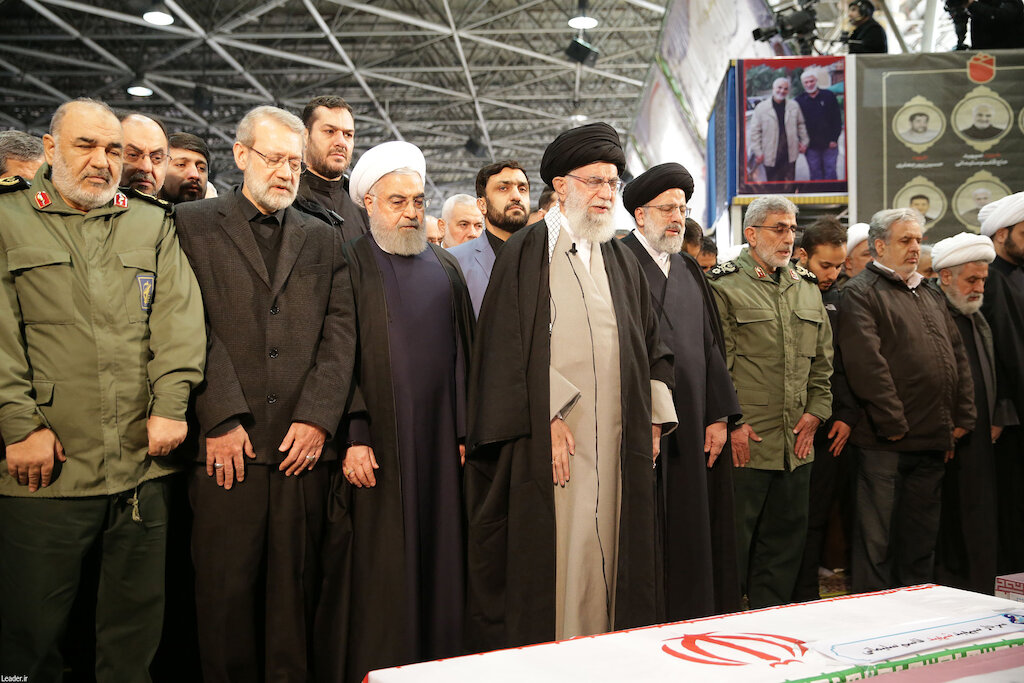
January 3: President Donald Trump ordered an airstrike on a convoy of Iranian and Iraqi military leaders leaving Baghdad’s airport. The drone attack killed seven people, including General Qassem Soleimani, the head of Iran’s elite Qods Force, and Abu Mahdi al Muhandis, the leader of Kataib Hezbollah, an Iraqi militia trained and armed by Iran that had attacked U.S.-led coalition forces and Iraqi Security Forces. Muhandis was also the deputy commander of the Popular Mobilization Forces, an umbrella group of predominantly Shiite militias formed to fight ISIS.
Washington alleged that Soleimani was planning attacks targeting U.S. personnel and interests in the region. The Pentagon announced the deployment of 3,500 additional U.S. troops to the region after Iran’s supreme leader vowed “severe revenge” for the killing of Soleimani.
January 5: Iran announced that it would not abide by the 2015 nuclear deal’s restrictions on the number of centrifuges used to enrich uranium. Centrifuges are used to produce enriched uranium, a key component for power generation and nuclear weapons. But Foreign Minister Mohammad Javad Zarif said that Iran would continue to allow the International Atomic Energy Agency (IAEA) to monitor its nuclear program. He also left the door open to returning to full compliance with the agreement, known formally as the Joint Comprehensive Plan of Action (JCPOA), if sanctions are lifted.
January 8: Iran fired more than a dozen missiles at two Iraqi military bases housing U.S. troops in retaliation for the U.S. killing of Soleimani. No U.S. or Iraqi personnel were killed, but the Pentagon later announced that 109 service members sustained traumatic brain injuries. Foreign Minister Zarif emphasized that Tehran did not seek war or escalation. President Rouhani and Supreme Leader Khamenei said that Iran’s goal was to expel U.S. forces from the region.
In a televised address, President Trump announced new economic sanctions on Iran, but he also offered to negotiate with the Islamic Republic. Trump suggested that the two countries could work together on issues of common concern, such as ISIS. “The fact that we have this great military and equipment, however, does not mean we have to use it. We do not want to use it,” he said.
The Islamic Revolutionary Guard Corps (IRGC) shot down Ukraine International Airlines Flight 752. All 176 people on board were killed, including 82 Iranians, 63 Canadians, 11 Ukrainians, 10 Swedes, four Afghans, three Germans and three British nationals. Brigadier General Amir Ali Hajizadeh, the IRGC aerospace commander, claimed that the jet turned toward a sensitive site and was mistaken for a cruise missile. Iranians launched week-long protests over government incompetence and for initially denying responsibility. “Death to the liars,” demonstrators shouted in Tehran. Security forces reportedly used live ammunition and tear gas to disperse protestors.
January 10: President Trump issued an executive order authorizing sanctions on the construction, manufacturing, textiles and mining sectors of the Iranian economy. Mining and metals had accounted for some 10 percent of export revenue from non-oil sources. The Treasury Department also blacklisted eight senior Iranian officials, including Ali Shamkhani, secretary of the Supreme National Security Council. “The United States is targeting senior Iranian officials for their involvement and complicity in Tuesday’s ballistic missile strikes,” said Treasury Secretary Steven Mnuchin.
January 14: Britain, France and Germany urged Iran to reverse a half dozen recent breaches of the 2015 nuclear deal or face reimposition of U.N. sanctions. British Prime Minister Boris Johnson suggested that the JCPOA could be renegotiated. “Let's replace it with the Trump deal.”
The Guardian Council, a body of 12 senior clerics, disqualified 9,000 of some 14,000 candidates, including 90 incumbents, from running for parliament in February. The majority were banned for financial issues, such as fraud and embezzlement, said Abbas Ali Kadkhodaei, a Guardian Council spokesman. Most of the rejected candidates were reformists or moderates, Etemad newspaper reported.
January 25: As the Trump administration increased sanctions, Iran announced that it had amassed 1,200 kilograms (or 2,646 pounds) of low-enriched uranium, five times more than the 203-kilogram (447-pound) limit under the 2015 nuclear deal—up from 372 kilograms (821 pounds) in November 2019.
February 19: Iran announced its first cases of COVID-19. The Ministry of Health reported that two elderly people in Qom had died from the coronavirus. On February 23, Health Minister Saeed Namaki blamed travelers between Qom and Wuhan, China. The virus spread to nearly all 31 provinces within two weeks. By mid-March, cases traced to Iran had shown up in at least 23 other countries on four continents.
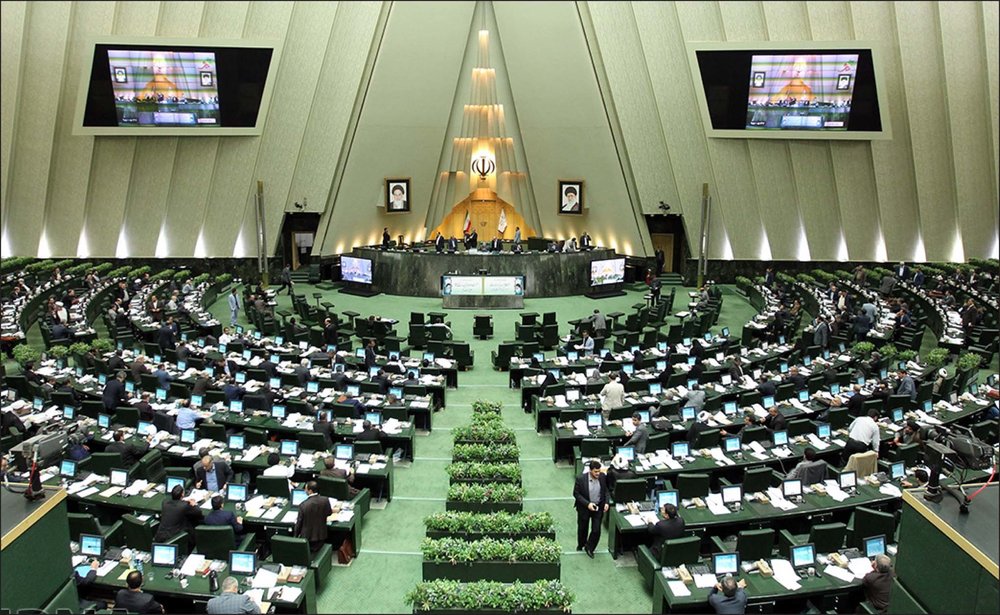
February 21: Conservative and hardline factions, including candidates closely aligned with the Revolutionary Guards, won a sweeping victory in parliamentary elections (a runoff for 10 seats was held on September 11). The conservatives and hardliners won 225 out of the 290 seats, more than doubling their presence in parliament; they had held 83 seats in the previous parliament. In a major setback for President Rouhani, only 13 reformists won seats, down from 121 in 2016. Iranian candidates often run in loose coalitions rather than formal parties. The turnout in the 2020 elections was under 43 percent, the lowest since the 1979 revolution.
March 3: The IAEA released two reports that criticized Iran for violations of the JCPOA. Iran had tripled its stockpile of low- enriched uranium over the previous three months, it said in one report. It shortened the breakout time to produce enough fissile material for a nuclear weapon, although the IAEA did not find evidence that Iran had taken steps to produce a bomb. In the second report, the IAEA condemned Iran’s refusal to grant inspectors access to three sites of interest. The report said that it found evidence from early July 2019 that was consistent with efforts to “sanitize” part of an unnamed location to obscure nuclear material.
March 22: In a televised address, Supreme Leader Khamenei rejected U.S. aid to help combat the coronavirus outbreak. “You might give us a medicine that would spread the disease even more or make it last longer,” he said on March 22. Khamenei also invoked a conspiracy theory that the United States developed COVID-19, based on genetic science, to target Iranians.
March 25: Robert Levinson, a retired FBI agent who disappeared in Iran in 2007, died in Iranian custody, his wife and children announced. Levinson had reportedly been on a rogue CIA mission when he disappeared on Kish Island. He was the longest-held hostage in U.S. history. On March 26, Secretary of State Mike Pompeo said that only Iran knew what happened to Levinson, but Tehran denied any knowledge of Levinson’s whereabouts.
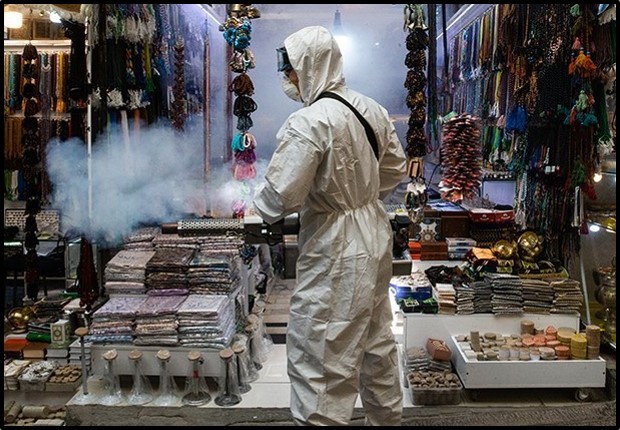
March 30: The first wave of Iran’s pandemic peaked with 3,186 new daily cases.
April: Iran began to slowly reopen government offices and businesses after a two-month shutdown due to COVID-19. On April 11, shops, workshops and factories outside of Tehran began to reopen. The following day, the government lifted restrictions on travel between cities in the same province. On April 20, shopping malls and bazaars reopened, and travel resumed among provinces. But the two-month closure of businesses and borders had already done significant damage to the economy.
Iran faced a stunning decline in the price of oil – a major source of foreign exchange– as an unexpected byproduct of the pandemic. The global demand for fuel sharply declined due to limited travel. By April 21, the price of Iran’s heavy crude fell below $12 per barrel — down from $44 or more per barrel in February. Oil exports plummeted as low as 70,000 barrels a day in April, down from more than 2 million in 2016. The International Monetary Fund revised its original estimate of zero growth in 2020; it projected that the economy would shrink by up to six percent.
April 15: The United States accused Iranian military vessels of conducting “dangerous and harassing” maneuvers close to U.S. Navy and Coast Guard ships in the Persian Gulf. A group of 11 IRGC speedboats repeatedly approached six U.S. military vessels at close range and at high speeds, the Pentagon said. The U.S. warships were conducting joint training operations with U.S. Army helicopters in international waters. On April 22, President Trump said that he had instructed the Navy to “destroy” Iranian gunboats if they harassed U.S. ships.
May 23 – June 2: Five Iranian tankers—the Clavel, Faxon, Forest, Fortune and Petunia— delivered 1.53 million barrels of gasoline, worth more than $45 million, to Venezuela. The vessels were escorted by the Venezuelan military after entering the Caribbean. It was the first shipment of Iranian gasoline to Venezuela, according to Hojattolah Soltani, Tehran’s ambassador to Caracas.

May 27-28: Iran’s new parliament held its opening session on May 27, despite the pandemic. The parliament elected Mohammad Baqer Qalibaf, a political hardliner and a former Revolutionary Guard, as its new speaker. The former mayor of Tehran, who also ran for the presidency three times, received 230 votes from the 264 lawmakers who attended the session. Qalibaf vowed to improve the livelihood of the poor, create jobs, raise the value of the national currency, and decrease Iran's dependence on oil.
June 2: Iranian Foreign Minister Zarif announced that Sirous Asgari, an Iranian scientist who had been imprisoned in the United States, was on a plane back to Iran. In 2016, the United States had charged Asgari with stealing trade secrets related to research he had done at Case Western Reserve University in 2012 and 2013. In November 2019, U.S. District Court Judge James Gwin ruled that the government’s evidence against Asgari was insufficient and dismissed the charges. But Asgari’s deportation was delayed due to complications with his passport and his diagnosis with COVID-19.
June 4: Iran released Michael White, an American who had been detained for nearly two years in Mashhad. The Navy veteran was arrested in July 2018 while visiting his girlfriend in Iran. In March 2019, White was sentenced to two years for insulting the supreme leader and to 10 years for posting a private photograph on social media. In March 2020, White—a cancer patient—was released from prison on medical furlough and transferred to a hospital with COVID-19 symptoms. White was exchanged for Majid Taheri, an Iranian doctor charged with violating U.S. sanctions on Iran.
June 4: After a respite in infections, the pandemic hit a second peak with 3,574 new daily infections.
June 19: The world’s nuclear watchdog passed a resolution—25 to two, with seven abstentions—calling on Iran to fully cooperate with an investigation into its past nuclear work after more than a year of stonewalling. Iran had denied inspectors access to two suspect sites where it was suspected of storing undeclared nuclear material The resolution was the first formal challenge of Iran in eight years from the IAEA Board of Governors.
July 2: A mysterious explosion extensively damaged Iran’s main nuclear enrichment site at Natanz. The blast damaged a factory producing advanced IR-4 and IR-6 centrifuges that enrich uranium faster than the IR-1 models allowed under the 2015 nuclear deal. Enriched uranium can be used to produce energy or fuel a bomb. The damage set back the enrichment program by months, Iran conceded.
July 10: Iran’s Supreme Court upheld the death sentences for three young activists who participated in protests in November 2019. The verdict sparked outrage on social media. The government reacted by limiting internet access. On July 19, Iran’s judiciary suspended the executions.
July 28: During a military wargame, Iran ran a mock attack on a fake U.S. aircraft carrier in the Persian Gulf near the Strait of Hormuz. The exercise – dubbed Great Prophet 14 – involved the IRGC’s air force and navy, but Iran’s conventional navy, which operates mainly in the Gulf of Oman and the Caspian Sea, did not participate. U.S. Central Command condemned the wargame as “irresponsible and reckless.”
August 9: President Rouhani announced that the state of emergency from the pandemic would be extended until at least January 2021. “We have been in this situation for six months and we must prepare ourselves for another six months at least,” Rouhani said. “We must find a middle way between normality and sticking to the virus restrictions.”
August 12: The United States seized control of 1.1 million barrels of Iranian oil aboard four tankers bound for energy-strapped Venezuela. George Gialozoglou, the Greek owner of the ships, agreed to turn over the cargo in a deal to prevent the United States from taking his ships or imposing sanctions on his company. On the same day, Iran attacked the Wila, another tanker owned by Gialozoglou, that was in the Persian Gulf. Iranian personnel boarded the ship, beat the crew, and stole equipment, the U.S. Navy reported.
August 14: A U.S. proposal that would prevent all U.N. members from selling conventional arms to Iran failed at the Security Council. The vote — two in favor (the United States and the Dominican Republic), two opposed (Russia and China), and 11 abstentions — was a blow to the Trump administration.
August 17: Iran offered bounties to Taliban fighters to target U.S. forces and coalition troops in Afghanistan, CNN reported. Iran was linked to at least six attacks in 2019 by the Haqqani network, including one on Bagram Air Base outside Kabul. Iran denied the reports as U.S. propaganda.
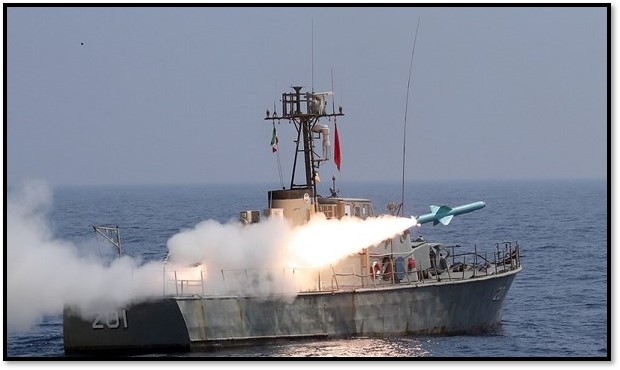
September 10-12: Iran tested cruise missiles and drones during an annual three-day wargame to test military capabilities at sea, both offensively and defensively. The Zolfaghar-99 exercise, named after Imam Ali’s sword, was held on and around three key waterways — the Strait of Hormuz, the Sea of Oman and the northern Indian Ocean, an area totaling 772,200 square miles. It mobilized Iran’s conventional navy, army and air force participated, although the IRGC did not participate.
September 12: Iran secretly hanged Navid Afkari, a 27-year-old champion wrestler. Afkari had faced multiple charges, including “enmity against God,” insulting the supreme leader, and murder of a security officer during Iran’s 2017-2018 protests over economic hardships and political repression.
September 18: Iran's Health Ministry issued a nationwide coronavirus red alert because of a new spike in infections. “We no longer have orange and yellow,” Deputy Health Minister Harirchi said. “The entire country is red.” He warned that the death toll could reach 45,000 if the infection rate did not decrease.
October 18: The global ban on the sale of conventional arms to Iran expired and opened the way for Tehran to import weapons, including warplanes, helicopter gunships, missiles, tanks, artillery, and other weapon systems. The ban was imposed in 2010 by U.N. Resolution 1929. The embargo was lifted as part of the 2015 nuclear deal as one of the incentives for Tehran to limit its nuclear program. The provision also allowed Iran to export its domestically produced arms for the first time in a decade.
October 21: John Ratcliffe, the U.S. Director of National Intelligence, accused Iran and Russia of interfering in the U.S. presidential election. “We have already seen Iran sending spoofed emails designed to intimidate voters, incite social unrest, and damage President Trump,” he said. U.S. Cyber Command and the National Security Agency (NSA) responded in a cyber attack against Iranian hackers working for the IRGC, according to U.S. officials.
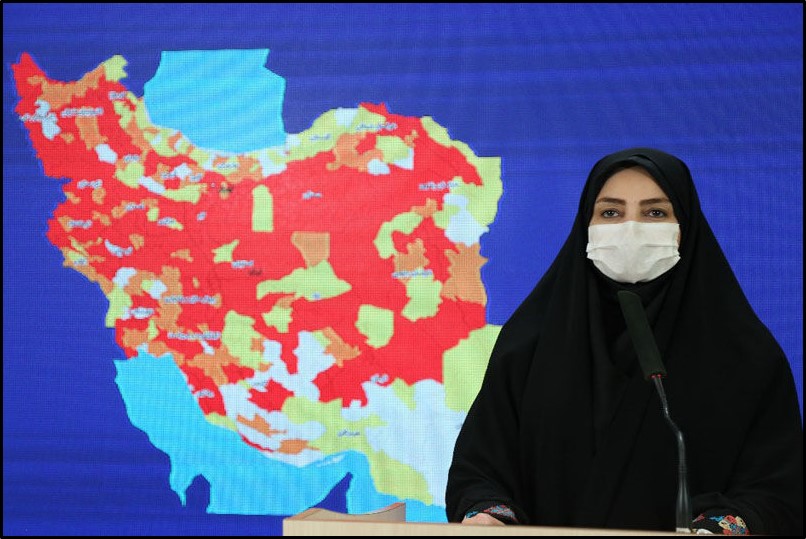
October 26: Iran reported that one person was dying every four minutes from COVID-19; the government ordered a partial lockdown in 43 cities. Nearly all private businesses, religious institutions and government buildings were told to remain closed until November 20. Half of all public sector employees were told to work remotely.
October 28: The IAEA reported that Iran was building a new underground centrifuge assembly plant at the Natanz facility after the previous plant was damaged in an explosion in July.
November 2: The world’s nuclear watchdog agency reported that Iran had amassed 12 times the enriched uranium permitted by the 2015 nuclear deal. The JCPOA stipulated that Tehran was limited to producing a maximum of 203 kilograms (or 447 pounds) of uranium enriched to only 3.6 percent. Tehran had stockpiled 2,443 kilograms (or 5,386 pounds) of uranium enriched to 4.5 percent, the IAEA reported.
Experts claim that Iran could produce two nuclear weapons if it enriched its entire stockpile to 90 percent. Because of its growing stockpile, the so-called breakout time needed to enrich enough uranium for one nuclear bomb decreased from more than a year to about three months, the Institute for Science and International Security estimated. Generating fuel is one of three steps required to make a viable bomb; the others are designing the weapon and marrying it to a delivery system, such as a missile or a bomb from a warplane.
November 18: The IAEA and the United States urged Iran to provide more information about uranium particles found nearly two years earlier at Turqazabad, a possible site not declared to international inspectors. “What they are telling us from a technical point of view doesn’t add up, so they need to clarify this,” IAEA Director General Rafael Grossi told reporters. Iran had claimed that the warehouse was a carpet-cleaning facility after Israel had revealed its existence in September 2018.
November 27: Mohsen Fakhrizadeh, widely believed to be the pioneer behind Iran’s nuclear weapons program, was assassinated in a roadside attack about 40 miles east of Tehran. Iran blamed Israel and vowed retaliation. Supreme Leader Ayatollah Ali Khamenei ruled out new diplomacy with the United States in a statement read by his representative at the scientist’s funeral on November 30.
December 1: Iran’s parliament, which is dominated by conservatives and hardliners, passed a bill requiring the government to immediately resume enriching uranium to 20 percent and to stockpile 120 kilograms (265 pounds) of it annually. Uranium must be enriched to 90 percent or above to fuel a weapon. Parliament also called on President Rouhani, who opposed the bill, to restrict IAEA inspectors if U.S. sanctions--on Iran's banking and oil sectors--were not lifted within a month. The Guardian Council later extended the deadline to two months.
December 3: Iran surpassed one million cases of COVID-19. The death toll hit 49,348.
December 12: Iran executed Ruhollah Zam, an activist and journalist who ran Amad News, an opposition news website. Iran changed him with “corruption on earth” for inciting anti-government protests in 2017-18. He had been living in France, which had granted him asylum. During a trip to Iraq in September 2019, Ruhollah was captured by Iranian agents and returned to Iran.
